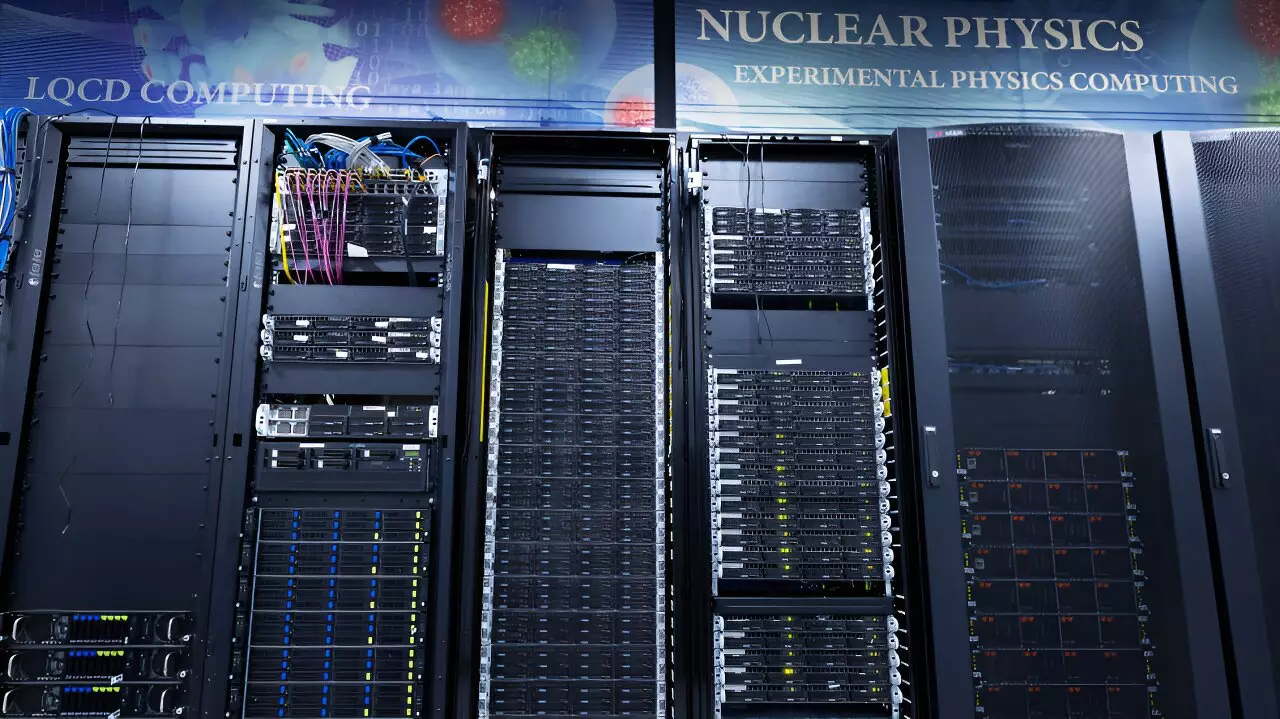In the realm of particle physics, what appears to be solid matter is, in fact, an ever-moving tapestry of particles and interactions. At the heart of atomic nuclei lie hadrons, the most recognized of which are protons and neutrons. These hadrons are not mere entities made up of simpler components; they consist of a complex interplay of quarks and gluons, known collectively as partons. Exploring this microscopic arena is no simple task, yet a dedicated team of physicists, the HadStruc Collaboration, is delving deep into the intricacies of these fundamental particles.
Headquartered at the Thomas Jefferson National Accelerator Facility under the U.S. Department of Energy, the HadStruc Collaboration aims to investigate the structure and interactions of partons within hadrons. The team comprises a diverse group of physicists hailing from various institutions, such as William & Mary, Old Dominion University, and even international partners from France. The collaborative nature of their research underscores the importance of varied expertise in unraveling the intricate dynamics of nuclear physics.
As articulated by Joseph Karpie, a postdoctoral researcher involved in the project, the objective of the group extends beyond mere observation. They seek to formulate a mathematical description that elucidates how quarks and gluons create the composite particles known as hadrons. Their recent findings, published in the *Journal of High Energy Physics*, signify a substantial step ahead in this complex journey, equipping physicists with new tools to explore the fabric of matter.
The Mechanics of Partons: Gluons and Quarks
The fundamental forces that govern the interactions of these partons are noteworthy, particularly the strong force. This force is one of the four fundamental interactions in nature; it binds quarks together, forming protons and neutrons. However, understanding how these constituents contribute to the overall properties of the hadron—especially properties such as spin—remains an area of active inquiry.
The team’s approach utilizes a sophisticated technique called lattice quantum chromodynamics (QCD). This method allows researchers to simulate the conditions under which protons are formed and provides insights into the configurations of quarks and gluons in three dimensions. By shifting from one-dimensional parton distribution functions (PDFs) to generalized parton distributions (GPDs), researchers can better visualize and interpret the spin contributions of quarks and gluons within the proton.
Revealing the Mystery of Proton Spin
One of the most profound challenges in particle physics is deciphering the origin of the proton’s spin. Initial experiments hinted that the spin of quarks accounts for less than half of the total spin observed in protons, leading to a fascinating realization: the contributions from gluon spin and the orbital angular momentum of partons likely play substantial roles as well.
The HadStruc Collaboration’s work with GPDs enables it to access orbital angular momentum and potentially provide a comprehensive explanation of how proton spin is distributed among its constituent particles. This exploration will not only enhance theoretical knowledge but may also usher in a new era of experimentation as researchers strive to measure and verify these theoretical predictions.
Conducting the necessary simulations entails formidable computational resources. The HadStruc Collaboration executed around 65,000 simulations to validate their theoretical models, necessitating the utilization of some of the world’s most powerful supercomputers, including those at the Texas Advanced Computer Center and Oak Ridge National Laboratory. This extensive computational effort showcases the intersection of theoretical physics and computational advancements, as researchers strive for precision and accuracy in their findings.
As the researchers sift through countless simulations, the ultimate goal remains to enhance approximation methods in their theories, potentially leading to discoveries that could advance the current understanding of hadron structure. Karpie emphasizes that progress in quantum chromodynamics has historically lagged behind experimental validation. However, it seems that the HadStruc Collaboration is keen to bridge this gap, proactively evolving their theories as new data emerges.
Future Directions in Hadron Research
Looking ahead, the collaboration anticipates further experimental validations of their models at prominent facilities worldwide, including Jefferson Lab and the upcoming Electron-Ion Collider (EIC) at Brookhaven National Laboratory. The EIC promises a leap in capabilities, poised to probe deeper into hadron structures than ever before. Yet, the activities at Jefferson Lab continue unabated, as they collect valuable data that complements the theoretical work being conducted.
As Karpie states, the journey toward a greater understanding of hadrons and their constituents is a continuous process, involving reciprocal interactions between computation and experimentation. The HadStruc Collaboration is poised to play a pivotal role in this journey, setting the stage for breakthroughs that could ultimately transform our comprehension of the subatomic world and its governing principles.
The work of the HadStruc Collaboration embodies the essence of modern physics—an intricate dance of theory, computation, and experimentation. As they progress, the mysteries surrounding protons, quarks, gluons, and the fundamental forces of nature will become clearer, offering insights not only into the nature of matter but also the universe itself. It is an exciting time for nuclear physics, and the trailblazers at HadStruc are leading the charge.

